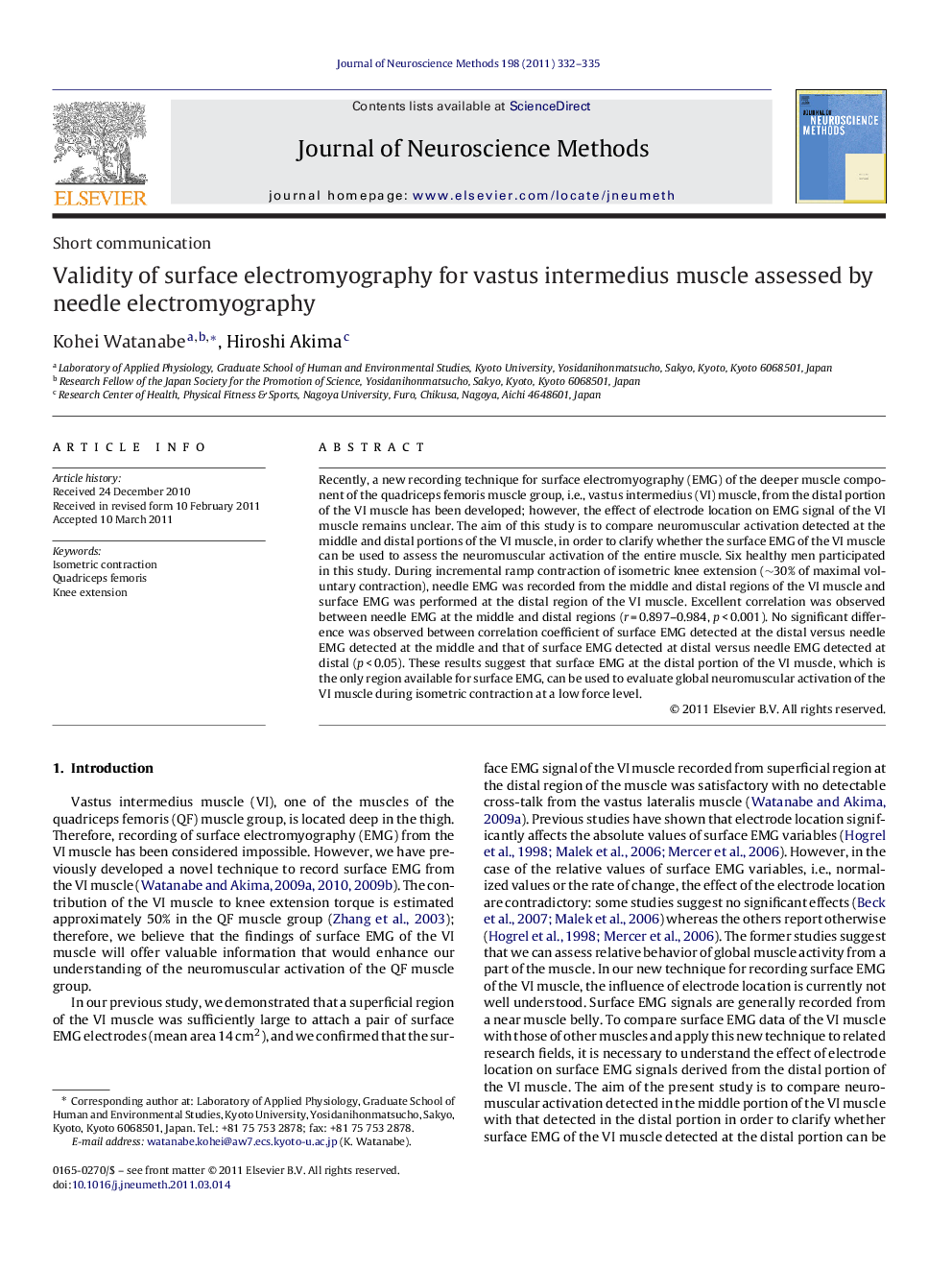| Article ID | Journal | Published Year | Pages | File Type |
|---|---|---|---|---|
| 4335459 | Journal of Neuroscience Methods | 2011 | 4 Pages |
Recently, a new recording technique for surface electromyography (EMG) of the deeper muscle component of the quadriceps femoris muscle group, i.e., vastus intermedius (VI) muscle, from the distal portion of the VI muscle has been developed; however, the effect of electrode location on EMG signal of the VI muscle remains unclear. The aim of this study is to compare neuromuscular activation detected at the middle and distal portions of the VI muscle, in order to clarify whether the surface EMG of the VI muscle can be used to assess the neuromuscular activation of the entire muscle. Six healthy men participated in this study. During incremental ramp contraction of isometric knee extension (∼30% of maximal voluntary contraction), needle EMG was recorded from the middle and distal regions of the VI muscle and surface EMG was performed at the distal region of the VI muscle. Excellent correlation was observed between needle EMG at the middle and distal regions (r = 0.897–0.984, p < 0.001). No significant difference was observed between correlation coefficient of surface EMG detected at the distal versus needle EMG detected at the middle and that of surface EMG detected at distal versus needle EMG detected at distal (p < 0.05). These results suggest that surface EMG at the distal portion of the VI muscle, which is the only region available for surface EMG, can be used to evaluate global neuromuscular activation of the VI muscle during isometric contraction at a low force level.
